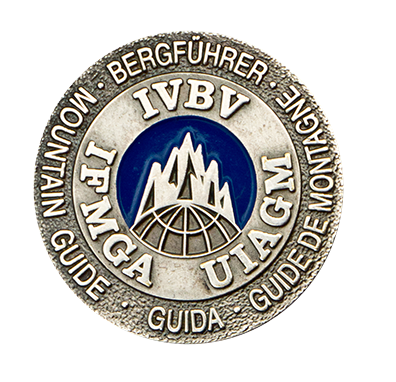How to Read Glacier Health
The Canary in the Coal Mine
Glaciers are visual indicators of climate, if you know how to read them. With a trained eye, mountaineers can simply look at a glacier and know the local climate trend. After numerous discussions with glaciologists, I've narrowed down a list to five visual indicators that a glacier is unhealthy.
1) Unhealthy glaciers lack snowcover.
Snow feeds glaciers. At the end of summer, if a glacier is less than two-thirds covered with snow, then it is an unhealthy glacier. In other words, before the first winter snowfall, the equilibrium line altitude, which divides the accumulation zone from the melt zone, should be no more than a third of the way up from the glacier terminus—otherwise the glacier is losing volume.
A small, unnamed glacier in the Chugach Mountains. This glacier's equilibrium line altitude is at a good position for a healthy glacier. The problem is, this photo was taken in early July. Two months of summer melt season remain. Many small glaciers in Alaska will soon be gone.
2) Unhealthy glaciers have lost ice thickness.
In response to warmer temperatures, glaciers lose ice through thinning, even more so than by receding. From a climber’s perspective, your altimeter or GPS might register elevations lower than those shown on the map. Some glaciers, such as the Taku Glacier in Alaska's Coast Range or the center of the Greenland ice sheet, have increased snowfall in their accumulation zones. This is because the warmer than normal temperatures, while remaining below freezing, allow the air to hold more moisture and produce more snow.
Navigating by GPS in the Tordrillo Mountains in the Alaska Range. Maps worldwide show glacier elevations higher than your GPS will read.
3) Receding glaciers have ramped ends.
Receding glaciers have a relatively crevasse-free, sloping snout, like a wheelchair ramp, created by ice stagnating and melting in place. Healthy glaciers, like the Taku, have heavily crevassed, vertical or bulbous fronts.
The Raven Glacier in the Western Chugach. You can walk right onto receding glaciers.
4) Trim lines surround dying glaciers.
Like bath tub rings, thinning glaciers leave trim lines on the valley walls that show the most recent high ice level. As the glacier melts down, a visible line remains on the valley wall between the vegetated and lichened terrain above and the exposed moraine and lichen-free rock below. Like high water marks, trim lines surround shrinking glaciers worldwide. Most obvious are trim lines from the Little Ice Age that ended 100 to 150 years ago. Unhealthy glaciers have trim lines far above the glacier surface.
Climbing Mount Baker's Easton Glacier with trim lines visible high above the present glacier surface.
5) Moraine surrounds and covers the end of receding glaciers.
With less snowfall and warmer temperatures, the glacier conveyor belt slows and moraine accumulates on the glacier surface, sometimes until the ice is entirely covered. Thus, receding glaciers have moraine-covered melt zones, while healthy glaciers have white-ice melt zones. When the ice under the moraine melts, the mud, rock and boulders become ground moraine. Early successional species, such as moss and alder, grow on this newly exposed land in the wake of a receding glacier. In contrast, the vegetation in front of a healthy glacier is characterized by climax forest, with old-growth species, like hemlock.
Moraine in the Western Chugach Mountains.
Big glaciers are hard to read
Big glaciers and glaciers in winter can be difficult to diagnose. In winter and spring, a thick blanket of snow covers most glaciers. During this time, seeing glacier health indicators like moraine and trim lines is more difficult, but still possible. Diagnosing glacier health on some big glaciers, such as the Kahiltna Glacier on Denali, presents another problem. On Denali, most climbers fly to 7,000 feet on the Kahiltna and spend their entire trip on a thick seasonal snowpack where the glacier appears fat and happy. In these situations, observe the melt zone on the flights in and out, looking for trim lines, fresh moraine, and moraine-dammed lakes.
Touring near Denali base camp at 7,000 feet on the Kahiltna Glacier.
Every season us mountaineers find changing climbing conditions in the glaciated mountains. As glaciers melt down, bergschunds become wider, making route access more difficult. Once on the route, you’ll find steep glacier headwalls normally covered by spongy neve have become black ice. And with less neve, you’ll see more rockfall, such as during the heat waves in 2003 and 2015 that closed Mont Blanc. But as glaciologist Keith Echelmeyer told me, “All change is not so bad—some routes may become more challenging and fun.”






